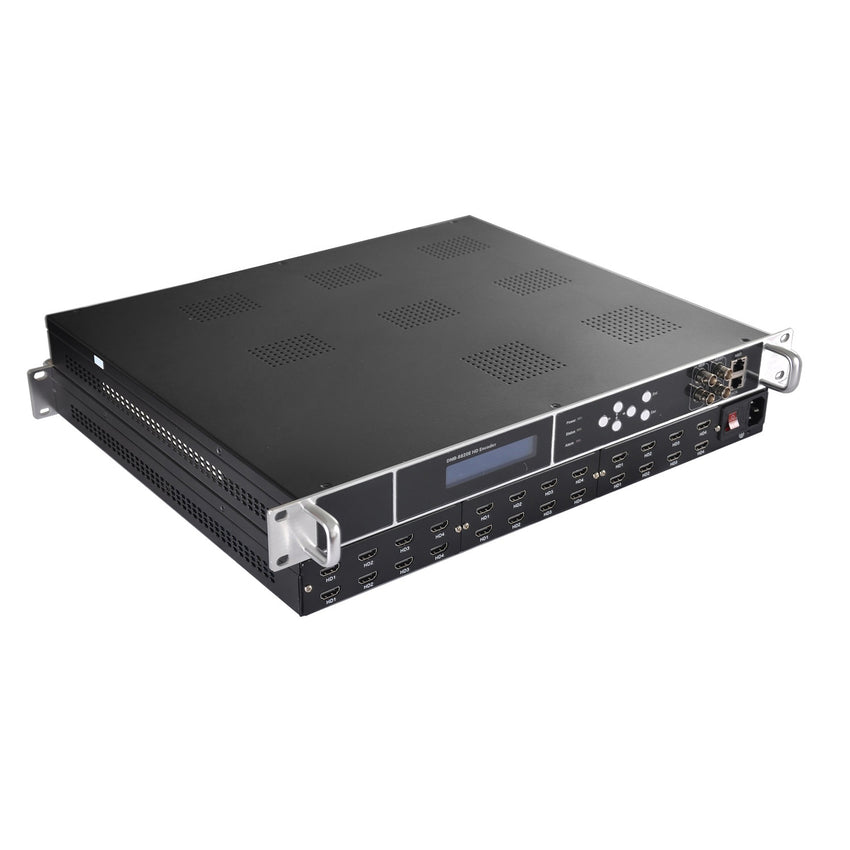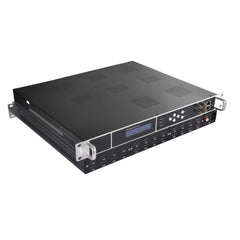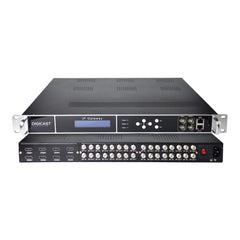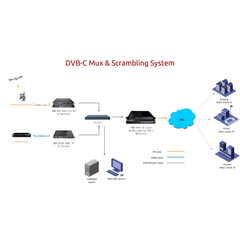Broadcast CATV Digital Cable TV Headend DVB-C Multiplexing & Scrambling solution
OUR ADVANTAGES
DIGICAST professional in Digital TV broadcasting with more than 10 years experience, provide the one-shop solution to cable TV operators to upgrade their system .
The Solution designed by DIGICAST may be easily integrated into existing network and cable infrastructure and ensure significant increase in the number of broadcast TV channels.
SERVICE IN DETAILS
What Does Digital Video Broadcasting - Cable (DVB-C) Mean?
Digital video broadcasting cable (DVB-C) refers a digital broadcast standard that cable as the transmission medium. Cable TV is a TV streaming system when radio-frequency signal is transmitted via coaxial cable or optic fiber.
DIGICAST Explains Digital Video Broadcasting - Cable (DVB-C)
Cable media has been very successful in delivering high-quality video and the latest multimedia features. Optical fiber is a high-speed cable medium with greater bandwidth and higher quality digital video. Fiber also has less problems with packet loss, which allows for the best quality. Coaxial cable is an alternative cable medium; compared to fiber, it is cost-effective for service providers, and it is still a good choice if service providers only want to provide mpeg-2 quality digital video.
What Does Mux & Scrambling Mean?
A scramble communication system comprises a station and a plurality of terminals connected to the station. The respective terminals are previously provided with specific scramble generation polynomials which are different from each other. In each terminal, its specific scramble generation polynomial is multiplexed with a transmission signal and the multiplex signal is transmitted to the station. In the station, the respective multiplex signals are received from the terminals and each the multiplex signal is divided into the specific scramble generation polynomial and the first transmission signal.
CASE STUDY--DVB-C MUX & SCRAMBING SOLUTION
Diagram
Object:
Add more programs from Satellite, local DVB player to existing coaxial line by HFC to unlimted TVs
SPECIFICATION
Signals Source Reception:
The equipments receives digital satellite signal sources, local video programs or A/V signal sources. In this process, TS stream or HDMI video signals are converted to IP stream output. Here recommend our high-quality head-end equipment suitable for this system. They are typical products of professional satellite receiver IRD, MPEG-2 SD encoder and MPEG-4 HD encoder.
Multiplexing Scrambling and Modulation
Multiplexing is mainly to multiplex TS streams of different programs into one TS stream and multiple program outputs which can make TS easy to transmit.
Signal scrambling is chosen according to the properties of the target signal.
The scrambling system must meet some requirements, such as the difficulty of unauthorized reception by third parties, the content of the scrambled signal cannot be read, in addition, efficient scrambling of various signals must be possible, a variety of service formats, such as Channel services and billing schemes, etc. must be supported.
After the TS stream is scrambled, in order to reduce the loss of long-distance transmission, the TS stream needs to be modulated into a radio frequency signal.
Modulation is the transmission of MPEG-TS as a stable high frequency oscillating signal. The modulated signal can be sent to a nearby building, home or remote end user via another QAM device. You can choose your modulator based on the number of SD/HD channels.
In our solution, the multiplexing and scrambling process is combined into the signal modulation module in the QAM modulator.
CAS Management System
Conditional Access System is the key position between Scrambling of the multiplexed programs and Subscriber Management System. Provider can control the system, add/reduce programs or embedding other business contents. By means of management and authorization, provider can achieve paid services.
- CAS(Conditional Access System)– security enhanced pay TV solution, and was designed to provide the most security media contents protection to operators. It can encrypt control words and user authorization information within a stable and highly secured environment, and fully compatible with DVB Simul-Crypt standard.
EQUIPMENT LIST
- DMB-90E Professional receiver (IRD)
- Satellite FTA DVB-S/S2 Tuner--(DMB-90E Multi channel professional receiver)
It supports 8/12/16/20 up to 24*Tuner(DVB-S/S2,DVB-T/T2, DVB-C, ATSC,ISDB-T/Tb, DTMB for option) input + 2*ASI(separate) input and 256*IP(SPTS)/4*IP(MPTS) + 2*ASI(separate) output
- DMB-9004CIA Encrypt DVB-S2 RF descrambling via cam card--(DMB-9004CIA Multi channel professional receiver)
Input: 4*Tuner(DVB-S/S2/T2/T/C)+1*ASI in(de-mux)+4*IP(GigE,de-mux); 4*CI decryption. Output:
- Encoder--Broadcast HD MPEG4 AVC Encoder(DMB-8820E Multi channel HDMI encoder)
Input: 2*ASI(separate) + 4/8/12/16/20 and up to 24 Channel HDMI.Output: 2*ASI(separate)+N*IP(SPTS)+1*IP(MPTS).
- Modulator---(DMB-4000 IP input Mux&Scrambling DVB-C Modulator)
DMB-4000 can process serial of high-integrated work of de-capsulation, re-multiplexing, DVB scrambling, DVB-T/DVB-C modulation, etc. for IP transport streams.






